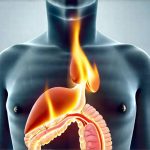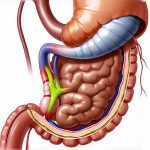Many people experience discomfort in their upper abdomen at some point – a burning sensation, bloating, nausea, or simply an uneasy feeling after eating. Often, these symptoms are quickly dismissed as “just indigestion” or “heartburn,” but differentiating between the two can be surprisingly difficult, and understanding the differences isn’t merely about naming the problem; it’s about recognizing when to manage symptoms at home and when seeking medical attention is prudent. Both conditions can significantly impact quality of life, causing disruption to daily activities and even sleep, so accurate self-assessment (while acknowledging its limitations) is a valuable skill.
Indigestion and heartburn are frequently confused because their symptoms often overlap – both can manifest as discomfort in the chest or upper abdomen. However, they stem from different underlying causes and require distinct approaches for relief. Indigestion isn’t a disease itself but rather a collection of symptoms indicating that something is interfering with normal digestion. Heartburn, on the other hand, is specifically related to acid reflux – stomach acid flowing back up into the esophagus. While self-treating mild instances can be effective, persistent or severe symptoms always warrant professional evaluation. This article will delve deeper into these conditions, helping you understand their nuances and when it’s time to consult a healthcare provider.
Understanding Indigestion
Indigestion, also known as dyspepsia, is essentially a disruption in the normal digestive process. It’s characterized by an uncomfortable feeling in the upper abdomen, often described as fullness, bloating, nausea, or even pain. Unlike heartburn, it doesn’t necessarily involve acid burning the esophagus. The sensation can be triggered by various factors, making diagnosis more complex. These factors include eating too quickly, consuming fatty or spicy foods, overeating, stress, and certain medications. Importantly, indigestion is a symptom rather than a disease in itself.
The digestive system is a remarkably intricate process, relying on coordinated muscle contractions, enzyme production, and acid secretion to break down food. When this system is disrupted – perhaps by eating a large meal that overwhelms the stomach’s capacity or by stress impacting gut motility – indigestion can occur. It’s also important to recognize that psychological factors play a significant role; anxiety and stress are well-known triggers for digestive upset. Sometimes, underlying medical conditions like gallbladder disease, pancreatic problems, or even ulcers can manifest as chronic indigestion, highlighting the need for proper diagnosis if symptoms persist. You might find it helpful to differentiate between ulcer pain and heartburn to understand how these conditions differ.
Indigestion often presents with a range of associated symptoms beyond the core discomfort in the upper abdomen. These may include: – Bloating and gas – Nausea, sometimes leading to vomiting – A burning sensation (though typically not as intense or localized as heartburn) – Feeling overly full quickly when eating – Belching – Frequent burping can be a sign of trapped air or excess stomach acid. Managing indigestion usually involves lifestyle adjustments like smaller meals, avoiding trigger foods, and managing stress. Over-the-counter remedies such as antacids can provide temporary relief, but are not a long-term solution if the underlying cause isn’t addressed. If you struggle with functional bloating, understanding its causes and treatments is crucial.
The Science Behind Heartburn
Heartburn is specifically caused by gastroesophageal reflux, where stomach acid flows back up into the esophagus. This happens when the lower esophageal sphincter (LES) – a muscular valve at the bottom of the esophagus – weakens or relaxes inappropriately, allowing acidic contents to escape. It’s important to understand that heartburn isn’t actually related to the heart; the name originates from the burning sensation felt in the chest, which can mimic cardiac pain. This misnomer often leads to unnecessary anxiety and confusion.
The esophagus lacks a protective lining like the stomach, making it vulnerable to acid damage. When acid reflux occurs repeatedly or severely, it can lead to inflammation of the esophagus (esophagitis) and even more serious complications over time. Factors contributing to heartburn include certain foods (spicy, fatty, acidic), large meals, lying down after eating, obesity, smoking, and pregnancy. Hiatal hernia – a condition where part of the stomach pushes up through the diaphragm – can also increase the risk of reflux.
Heartburn typically presents as a burning sensation rising from the stomach or lower chest towards the throat. Other common symptoms include: – A sour taste in the mouth – Regurgitation (the feeling of food coming back up) – Difficulty swallowing (dysphagia) – Chronic cough – Acid reflux can irritate the airways, leading to persistent coughing. Treatment for heartburn often involves lifestyle changes like elevating the head of your bed, avoiding trigger foods, and losing weight if necessary. Over-the-counter antacids and acid reducers (H2 blockers or proton pump inhibitors) can provide relief, but frequent use should be discussed with a doctor as they may have side effects. It’s vital to choose between a scan and a lab test when assessing your overall health.
Recognizing Key Differences: A Symptom Breakdown
Pinpointing the difference between indigestion and heartburn often relies on carefully examining the nature of your symptoms. While both involve discomfort in the upper abdomen, the quality and location of that discomfort can offer valuable clues. Heartburn is almost always characterized by a burning sensation – a distinct, upward progression from the stomach to the chest or throat. This burning feeling is typically more intense than the general discomfort associated with indigestion. Indigestion, on the other hand, tends to be more diffuse, encompassing feelings of fullness, bloating, nausea, and sometimes a vague ache in the upper abdomen.
Consider the timing of your symptoms as well. Heartburn often occurs after eating, especially after large or problematic meals, and may worsen when lying down. It can even wake you up at night. Indigestion, while also potentially triggered by food, doesn’t necessarily have this strong correlation with meal times. It might be more consistent, occurring regardless of what or when you eat. Furthermore, regurgitation – the sensation of food coming back up – is a hallmark sign of heartburn that rarely occurs in simple indigestion.
To further illustrate these distinctions, here’s a quick comparison: – Heartburn: Burning sensation rising from stomach/chest; Sour taste; Regurgitation; Worsened by lying down. – Indigestion: Fullness, bloating, nausea; Vague abdominal discomfort; Not necessarily tied to meal times; Less likely to involve burning or regurgitation. It’s important to remember that these are generalizations and individual experiences can vary. If you’re unsure, it’s best to err on the side of caution and seek medical advice. You may want to understand allergy and intolerance as these conditions could be contributing factors.
When To Seek Medical Attention
While mild instances of indigestion or heartburn can often be managed at home with lifestyle changes and over-the-counter remedies, there are certain warning signs that indicate a more serious underlying problem. Do not self-treat if you experience any of the following: – Severe chest pain – especially if accompanied by shortness of breath, sweating, or dizziness (this could indicate a heart attack). – Difficulty swallowing (dysphagia) – This may suggest esophageal narrowing or obstruction. – Unintentional weight loss – Significant weight loss without trying can be a sign of a serious medical condition. – Persistent vomiting – If you’re unable to keep food down for an extended period, seek medical attention. – Black, tarry stools or blood in your vomit – These are signs of bleeding in the digestive tract.
Chronic indigestion or heartburn that doesn’t respond to over-the-counter treatments also warrants evaluation by a healthcare professional. Repeated use of acid-reducing medications can mask underlying problems and potentially lead to complications. A doctor can perform tests to determine the cause of your symptoms, such as endoscopy (inserting a thin, flexible tube with a camera into the esophagus) or pH monitoring (measuring the amount of acid in the esophagus). These diagnostic tools can help identify conditions like gastroesophageal reflux disease (GERD), ulcers, hiatal hernia, or even esophageal cancer. You should also learn how to distinguish between stomach and colon gas for a more complete understanding of digestive issues.
Remember: this article provides general information and should not be considered medical advice. If you are concerned about your symptoms, please consult a qualified healthcare provider for proper diagnosis and treatment. Self-diagnosis can be misleading and potentially harmful. A doctor can accurately assess your situation, rule out serious conditions, and recommend the most appropriate course of action to restore your digestive health and well-being. Understanding dyspepsia: indigestion explained can also help you manage these conditions effectively.


















